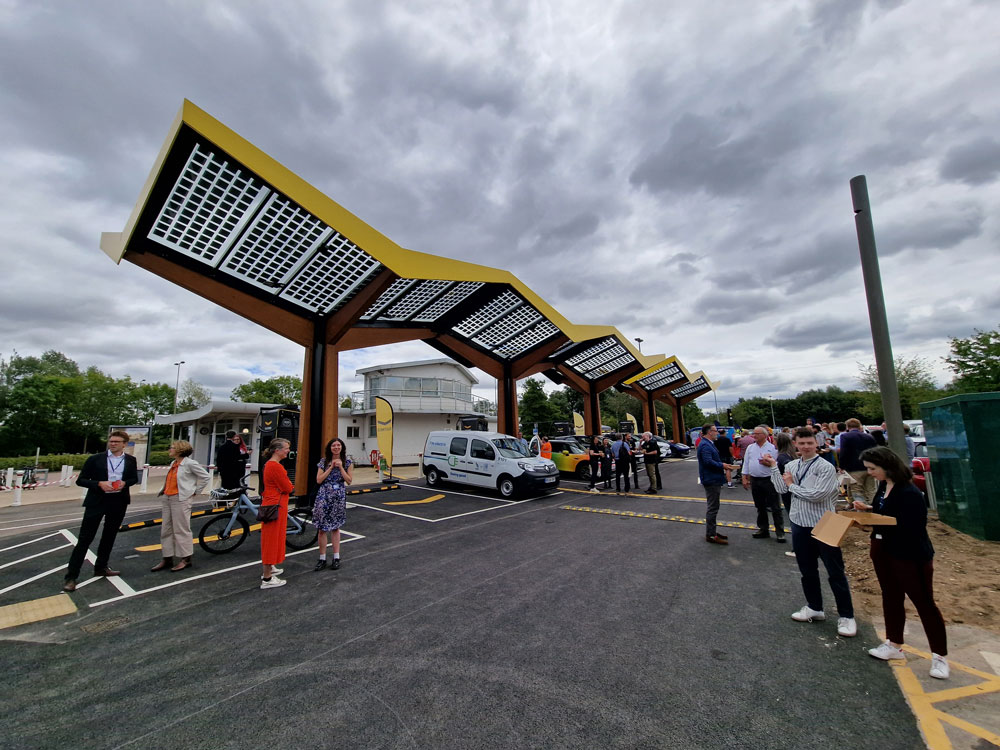Taking on the EV and renewable energy debate

The lack of 100 per cent renewable electricity in the grid should not hold fleets back from using electric vehicles. Jacob Roberts, transport policy manager at the Association for Renewable Energy and Clean Technology, explains why
Fleet managers can often be hesitant in switching to Electric Vehicles (EVs) if the vehicles would be using electricity from the grid, as there is no guarantee that the vehicles will be truly zero emissions. When the electricity comes from a 100 per cent renewable source, fleets can be declared to produce both zero tailpipe emissions and also zero well-to-wheel (WtW) emissions. However, using electricity from the grid, particularly when there is a low renewable mix, means that EVs may produce zero emissions at the tailpipe, but not from well-to-wheel. This is because much of the electricity on the grid is generated from non-renewable sources.
It is easy, but also incorrect, to assume that charging an EV with electricity from fossil fuel sources makes it no better than using petrol or diesel. Even when electricity from fossil fuel sources is used to charge an EV, the transmission of electricity, the EV charging process and the EV powertrain itself are significantly more efficient than the fuelling and combustion process associated with petrol and diesel vehicles. This means less energy is ultimately used and therefore emissions are still reduced. Emissions will also be reduced further over time, as renewable electricity generation increases. The lack of 100 per cent renewable electricity should therefore not hold fleets back from using EVs.
Efficiency
Before you even put petrol or diesel into a vehicle, it has already generated emissions through extraction, refining and shipping – in some cases from the other side of the world – which have a significant carbon footprint of their own. Alternatively, electricity gets from source to destination via an efficient transmission and distribution network, with comparatively minuscule losses.
This means that, even if the energy ultimately comes from the same fossil fuel source, using electricity to power vehicles is more efficient than combusting petrol or diesel. This greater efficiency contributes to less energy needed per vehicle mile and, in turn, fewer emissions per mile. Electricity is transmitted more efficiently, used more efficiently and therefore is lower emissions, even if it is from the grid. Even if you continue to rely on the grid, the grid mix of renewables is continuing to increase, and EV emissions will decrease further and further as time goes on, through ongoing commitments to net zero.
Fleets looking to reduce their emissions should not hesitate to purchase and operate electric vehicles. Doing so will reduce well-to-wheel emissions from day one and, if fleets can then source renewable electricity in the future, they can reduce the emissions further, potentially to zero.
What are the different options for fleet operators to access renewable electricity?
In most cases, fleets can access renewable electricity by entering into a renewable tariff with their energy supplier. A number of suppliers offer 100 per cent renewable energy tariffs and these are the simplest way to reduce emissions from EV charging. Other suppliers, including Octopus Energy, also provide time-of-use tariffs that make it cheaper for fleets to charge electric vehicles overnight when energy demand and costs are lower. The number of energy suppliers offering time-of-use tariffs is expected to grow in the coming years.
From a fleet perspective, it is particularly useful if vehicles are based at the depot, because you can then have one negotiated electricity supply to charge vehicles overnight when they are not being used. However, services are also available that allow fleets to manage the recharging of EVs that are kept at drivers’ homes overnight.
On a smaller scale it is common for charging hubs to micro-generate renewable energy onsite, often using battery storage to store renewable electricity when it is available so that it can be used as and when it is needed. Installing solar panels and/or battery storage to support EV charging infrastructure also offers further benefits that are not always directly apparent:
Firstly, the renewable electricity that would be generated and stored does not need to solely be used for vehicles – it can just as easily be used to power other business operations, potentially saving quite a lot of money.
Secondly, battery storage can reduce the peak load on the grid. Banks of several chargepoints can create hundreds of kilowatts of additional electricity demand. This can often result in significant costs associated with reinforcing the local electricity network – although the exact costs vary from site to site, depending on the strength of the local electricity network. By using battery storage, some of the additional power demand can be avoided, as batteries can be charged slowly over a long period of time and then discharged quickly to recharge vehicles without putting any additional strain on the grid. Battery storage does not come cheap but, in some cases, the cost to deploy battery storage will be lower than the costs to upgrade the local electricity network to provide a more powerful grid connection.
Another effective option that is becoming popular to operators of multiple, high-powered EV chargepoints is entering into agreements with local renewable energy providers, establishing what is known as a private wire connection to a local energy generator. There is a recent case study for this, outlined below.
The Energy Superhub Oxford
The Energy Superhub Oxford is a partnership between Pivot Power, Fastened and Oxford City Council, which has delivered a high-power charging hub at one of their park and ride sites. This hub is directly connected to a Pivot Power battery storage system which stores renewable energy and then provides directly to their charge points via a private electricity wire. That same battery storage system also provides electricity directly to Oxford City Council's fleet, therefore their vehicles have been proven to be completely zero emission WtW.
The Energy Superhub Oxford is a great example of how fleets can work with renewable energy developers within wider projects to implement private wire agreements.
Gridserve – Sun to Wheel
Another excellent example is Gridserve’s Sun-to-Wheel ecosystem, which is a way of distributing zero carbon energy to their UK-wide network, ensuring every kWh of energy used across the Gridserve Electric Highway is replaced with a kWh of net zero energy – giving all EV drivers a reliable source of sustainable charging.
Gridserve currently has two Electric Forecourts, one in Braintree, Essex and one in Norwich, Norfolk where they have created large-scale hybrid solar farms to provide and operate their own electricity. That electricity is safely stored on site in battery storage, building up a massive supply of clean energy to support the grid when the sun goes down – which is then used to power vehicles. These vehicles are still connected to the grid, in case of a huge spike in demand that completely emptied the batteries of all that solar electricity meaning they could still continue charging vehicles. But largely, the on-site solar farms and the battery storage means that all charging will be zero emissions.
At the REA, it is encouraging to see more and more solutions coming to market to make electric fleets accessible. Cleaner, greener mobility is on the rise, and it is important to be aware of the many different options available.
Image shows Energy Superhub Oxford.






